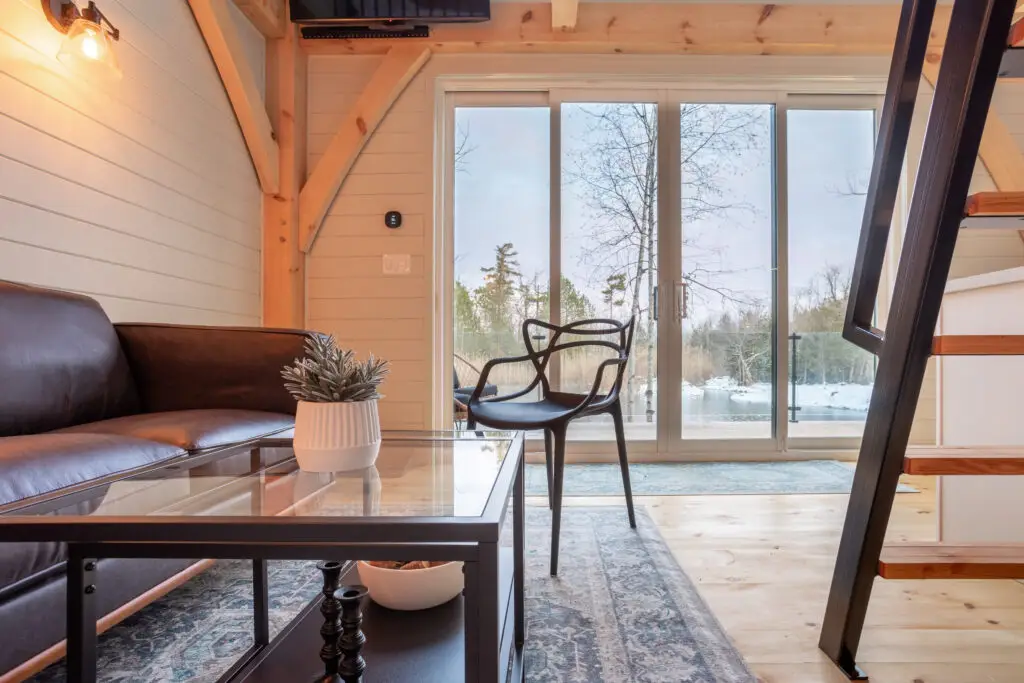
Timber Haven Tiny Home / Crafted by Timeless Timber Carpentry
If you’re in the process of enhancing your home, creating an outdoor living space, or embarking on the journey of building a new home, chances are you’ve encountered the timeless appeal of timber. Whether it was featured in the cozy charm of your uncle’s cabin or showcased on your mother’s Pinterest board, timber has a way of capturing the imagination and leaving a lasting impression.
Despite its association with rustic cottages in idyllic locations like Muskoka, timber is a versatile material that can elevate various architectural styles. The key lies in finding a team with the expertise to integrate it seamlessly into your project. The possibilities for timber integration are extensive, and understanding the process is crucial.
Let’s begin by considering the architecture of your current project:
- Classic Architecture:
If your home boasts classic architecture, such as a stone facade, red brick, thick walls, and tall baseboards, you’re in a prime position. The question arises: Do you want the timber frame to blend seamlessly with the historic charm, appearing original to the old home? Alternatively, are you aiming to introduce a classic timber design, adding a touch of sophistication to the existing structure? It’s essential to weigh these options before consulting with a designer, although professional input can be invaluable in making decisions.
- Modern Architecture:
If your home follows a modern architectural style, integrating timber might raise questions. However, it’s crucial to understand that timelessness doesn’t mean designlessness. When working with a contemporary design, communicate to your designer that timber decisions should complement the overall flow of the home. Rather than making bold statements, the timber should be incorporated as a carefully considered design element, aligning with the aesthetic of contemporary architecture. And as it distinguishes from a contemporary design, choice of natural timber color is an important consideration.
- Contemporary Architecture:
Contemporary homes often emphasize clean lines, open spaces, and innovative design. Incorporating timber into such a setting requires a nuanced approach. It’s important to ensure that the introduction of timber doesn’t disrupt the sleek and minimalist aesthetic but rather enhances it. Consider using timber elements in focal points, such as exposed beams or accents, to add warmth and a touch of natural texture without overshadowing the modern appeal. There are also places in a contemporary setting to make a statement with a vibrant, un-earthy color choice of timber in some designs. Working closely with a designer who understands the principles of contemporary architecture is essential to achieving a seamless integration that feels both sophisticated and timeless.
Remember, timber integration is an art that requires thoughtful consideration and skilled craftsmanship. By understanding the nuances of your home’s architecture and design goals, you can create a harmonious blend that stands the test of time. Whether you’re embracing the historic charm, adding a touch of sophistication to a contemporary space, or opting for a modern design, timber has the potential to transform your project into a true masterpiece.